Giant Panda
- January 10, 2024
- 0 comment
The giant panda, Ailuropoda melanoleuca, stands as an enchanting marvel of the natural world, captivating hearts globally with its distinctive black-and-white fur. Native to the mountainous regions of central China, particularly in provinces like Sichuan and Shaanxi, these iconic bears thrive in bamboo-rich habitats. Their large, round faces adorned with black eye patches and ears create an immediately recognizable appearance. Despite their cuddly exterior, adult giant pandas can reach sizes of up to 300 pounds, showcasing a robust build necessary for navigating their challenging mountainous terrain. Bamboo constitutes over 99% of their diet, with individual pandas consuming vast amounts daily to meet their energy needs.

Giant pandas have become synonymous with conservation efforts, both within China and internationally. Their endangered status is attributed to threats like habitat loss and low reproductive rates. Conservation initiatives, including captive breeding programs and international collaborations, have contributed positively to their population. Beyond their biological significance, giant pandas hold cultural importance in Chinese tradition, symbolizing peace and harmony. As these charismatic bears continue to face challenges such as climate change and habitat fragmentation, global awareness and active participation in conservation efforts become increasingly crucial. The giant panda remains a symbol not only of the delicate balance between nature and human development but also of the collective responsibility to protect and preserve the incredible diversity of our planet.
| Specifications | Details |
|---|---|
| Scientific Name | Ailuropoda melanoleuca |
| Family | Ursidae (Bear family) |
| Habitat | Mountainous regions of central China |
| Native Regions | Sichuan, Shaanxi, Gansu provinces |
| Distinctive Features | Black-and-white fur, round face, black eye patches and ears |
| Size | Up to 300 pounds (adults) |
| Diet | Over 99% bamboo, supplemented by fruits and small mammals |
| Reproductive Behavior | Solitary, brief mating season once a year |
| Conservation Status | Endangered |
| Population (Wild) | Approximately 1,800 individuals |
| Conservation Threats | Habitat loss, low reproductive rates, climate change, human-wildlife conflicts |
| Conservation Efforts | Captive breeding programs, international collaborations, habitat preservation |
| Cultural Significance | Symbol of peace and harmony in Chinese tradition |
| Global Impact | Iconic ambassador for wildlife conservation |
Giant Panda: A Marvel of Nature’s Contrasts

Giant pandas, with their distinctive black-and-white fur, have captured the hearts of people worldwide. In this article, we will delve into the fascinating world of these incredible creatures, exploring their habitat, unique features, dietary habits, reproduction, and the conservation efforts that play a pivotal role in their survival.
Giant pandas, scientifically known as Ailuropoda melanoleuca, are iconic symbols of conservation and biodiversity. Endemic to certain regions in China, these charismatic bears have become ambassadors for wildlife preservation globally.
Their unique appearance and cultural significance make giant pandas not only a national treasure in China but also renowned symbols of wildlife conservation worldwide. Let’s journey into the realm of these captivating creatures.
Habitat and Distribution
Native Regions of Giant Pandas
Giant pandas are primarily found in the mountainous regions of central China, with specific provinces like Sichuan, Shaanxi, and Gansu serving as their native habitats. The dense bamboo forests and cool, misty mountains create an ideal environment for these bears.

Unique Characteristics of Their Habitat
The panda’s habitat is characterized by a mosaic of bamboo thickets, coniferous forests, and gentle slopes. This unique setting provides both the food and shelter necessary for their survival.

Physical Features


Distinctive Black-and-White Fur
One cannot discuss giant pandas without marveling at their striking black-and-white fur, a feature that sets them apart in the animal kingdom. The contrast of colors, with black ears and eye patches against a predominantly white coat, is instantly recognizable.
Paw Structure and Adaptations
Giant pandas possess a “sixth thumb,” a modified wrist bone that functions like an opposable thumb, aiding them in grasping bamboo. This adaptation showcases their evolutionary prowess in adapting to a bamboo-dominated diet.
Notable Size and Weight Statistics
Despite their cuddly appearance, adult giant pandas can reach sizes of up to 300 pounds. Their robust build and large size are necessary for navigating their mountainous habitats and securing bamboo resources.
Diet and Feeding Habits
Bamboo is the Primary Food Source
Giant pandas are predominantly herbivores, with bamboo constituting over 99% of their diet. Their digestive systems, however, are not fully equipped to efficiently process bamboo, requiring them to consume large quantities daily.

Daily Consumption and Dietary Requirements
To meet their energy needs, giant pandas consume vast amounts of bamboo—up to 84 pounds per day. This unique dietary requirement presents challenges and underscores the importance of bamboo-rich habitats in their conservation.
Reproduction and Life Cycle
Mating Behaviors and Reproduction Process
Giant pandas are solitary creatures, and their mating season is a brief window each year. Understanding their unique mating behaviors and reproductive processes is crucial for conservation efforts.

Stages of a Giant Panda’s Life Cycle
From the vulnerable cub stage to adulthood, the life cycle of a giant panda involves distinct developmental stages. Exploring these stages provides insights into the challenges faced by these bears in the wild.
Conservation Status
Historical Threats and Population Decline
Historically, giant pandas faced threats such as habitat loss and poaching, leading to a decline in their population. Understanding the historical context is essential to appreciating the significance of current conservation efforts.

Current Conservation Efforts and Success Stories
Through dedicated conservation programs and international collaborations, the giant panda population has seen a positive shift. Success stories highlight the effectiveness of concerted efforts in preserving this species.
Giant Panda and Chinese Culture
Symbolism in Chinese Tradition
Giant pandas hold cultural significance in China, symbolizing peace, harmony, and friendship. Their role in Chinese tradition extends beyond wildlife conservation, making them revered symbols in various aspects of life.
Efforts to Preserve Cultural Significance
As China undergoes rapid development, preserving the cultural significance of giant pandas becomes a delicate balance between progress and tradition. Initiatives are in place to ensure the cultural value of these bears endures.
Challenges and Threats
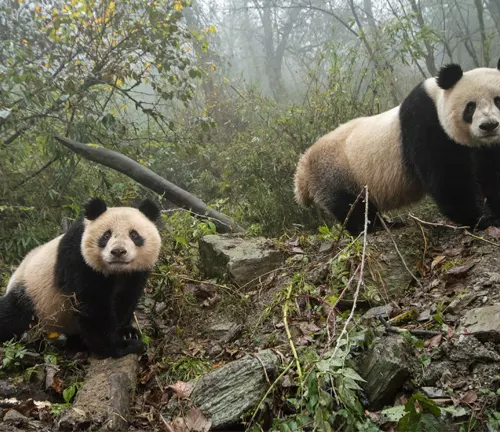

Ongoing Risks to Giant Panda Survival
While conservation efforts have made progress, giant pandas still face challenges. Habitat fragmentation, human-wildlife conflicts, and diseases pose ongoing risks that require continual attention and innovative solutions.
Climate Change and Its Impact on Their Habitat
The effects of climate change are increasingly evident in the giant panda’s habitat. Understanding these impacts is crucial for formulating adaptive strategies to mitigate the challenges posed by a changing climate.
Captive Breeding Programs
Success Stories in Breeding Programs
Captive breeding programs have played a pivotal role in boosting the giant panda population. Examining success stories sheds light on the potential of controlled breeding to supplement wild populations.
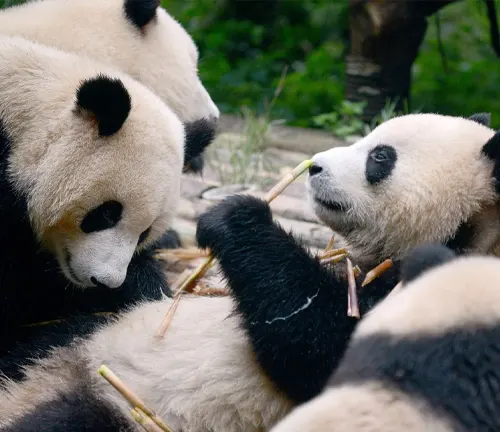
Ethical Concerns and Debates
While captive breeding programs contribute to conservation, ethical concerns and debates surround the practice. Balancing the welfare of captive pandas with conservation goals remains a topic of discussion within the scientific and conservation communities.
Giant Panda in Popular Culture
Representation in Media and Literature
Giant pandas have permeated popular culture globally, featuring in movies, cartoons, and literature. Exploring their representation provides insights into the impact of these animals on human imagination and creativity.
Impact on Tourism and Global Fascination
The global fascination with giant pandas translates into a significant impact on tourism. Sanctuaries and conservation centers draw visitors who wish to witness these iconic creatures, contributing to both local economies and conservation initiatives.
Unique Behaviors and Characteristics
Playful Nature and Social Interactions
Contrary to their solitary reputation, giant pandas exhibit playful behaviors and limited social interactions. Understanding these aspects of their behavior adds depth to our appreciation of their complex personalities.
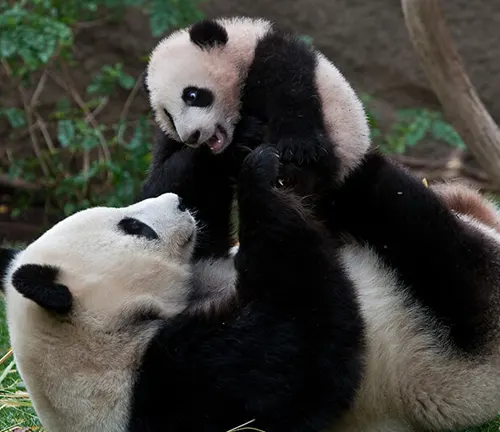
Adaptations for Survival in the Wild
Examining the unique adaptations of giant pandas, such as their thumb-like structure and specialized diet, provides insights into how these bears have evolved to survive in their challenging mountainous habitats.
Scientific Research on Giant Pandas
Key Findings and Contributions to Science
Scientific research on giant pandas has yielded valuable insights into their physiology, behavior, and ecological role. These findings contribute not only to panda conservation but also to broader scientific knowledge.
Ongoing Studies and Research Projects
Ongoing research projects focus on areas such as genetics, disease prevention, and habitat monitoring. These studies aim to address gaps in our understanding and inform future conservation strategies.
Conservation Challenges and Solutions
Balancing Conservation with Human Development
As human populations expand, finding a balance between giant panda conservation and economic development becomes increasingly challenging. Sustainable solutions are necessary to ensure the coexistence of pandas and human communities.

Future Strategies for Long-Term Sustainability
Looking ahead, the article explores potential strategies for ensuring the long-term sustainability of giant panda conservation. These strategies involve a combination of habitat preservation, community engagement, and technological advancements.
Different Species
Ailuropoda melanoleuca melanoleuca
This is the most common subspecies, often referred to simply as the giant panda. It is primarily found in the Sichuan province of China.

Ailuropoda melanoleuca qinlingensis
This subspecies is found in the Qinling Mountains in Shaanxi province, China. The main distinction between the two subspecies is related to their physical characteristics, such as fur color and skull measurements.

Frequently Asked Questions (FAQs)
- Why are giant pandas black and white?
The distinct black-and-white coloration of giant pandas is believed to provide camouflage in their snowy and rocky habitats, helping them blend into their surroundings. - What do giant pandas eat?
Giant pandas are primarily herbivores, with bamboo constituting over 99% of their diet. They consume various species of bamboo, supplemented by occasional fruits and small mammals. - Are giant pandas bears?
Yes, giant pandas belong to the bear family (Ursidae). They are classified as bears, despite some unique characteristics that set them apart from other bear species. - Why are giant pandas endangered?
Giant pandas face threats such as habitat loss due to human activities, poaching, and low reproductive rates. These factors contribute to their endangered status. - How many giant pandas are left in the wild?
As of the last available data, there are approximately 1,800 giant pandas left in the wild. Conservation efforts have contributed to a positive shift in their population. - Can giant pandas survive outside of bamboo forests?
While adaptable, giant pandas heavily rely on bamboo forests for their food source. Conservation efforts focus on preserving these habitats for the species’ survival. - Do giant pandas hibernate?
Giant pandas do not hibernate like some other bear species. They are active throughout the year, searching for food even in winter. - How successful are captive breeding programs for giant pandas?
Captive breeding programs have been successful in increasing the giant panda population. Programs in zoos and research institutions aim to maintain genetic diversity and contribute to conservation. - What are the main threats to giant panda survival today?
Ongoing threats include habitat fragmentation, human-wildlife conflicts, and the impact of climate change on bamboo-rich habitats. - How can individuals contribute to giant panda conservation?
Individuals can contribute by supporting reputable conservation organizations, staying informed about panda-related issues, and promoting sustainable practices in their daily lives.











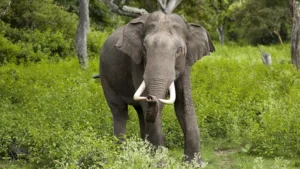

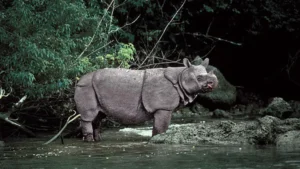
Leave your comment